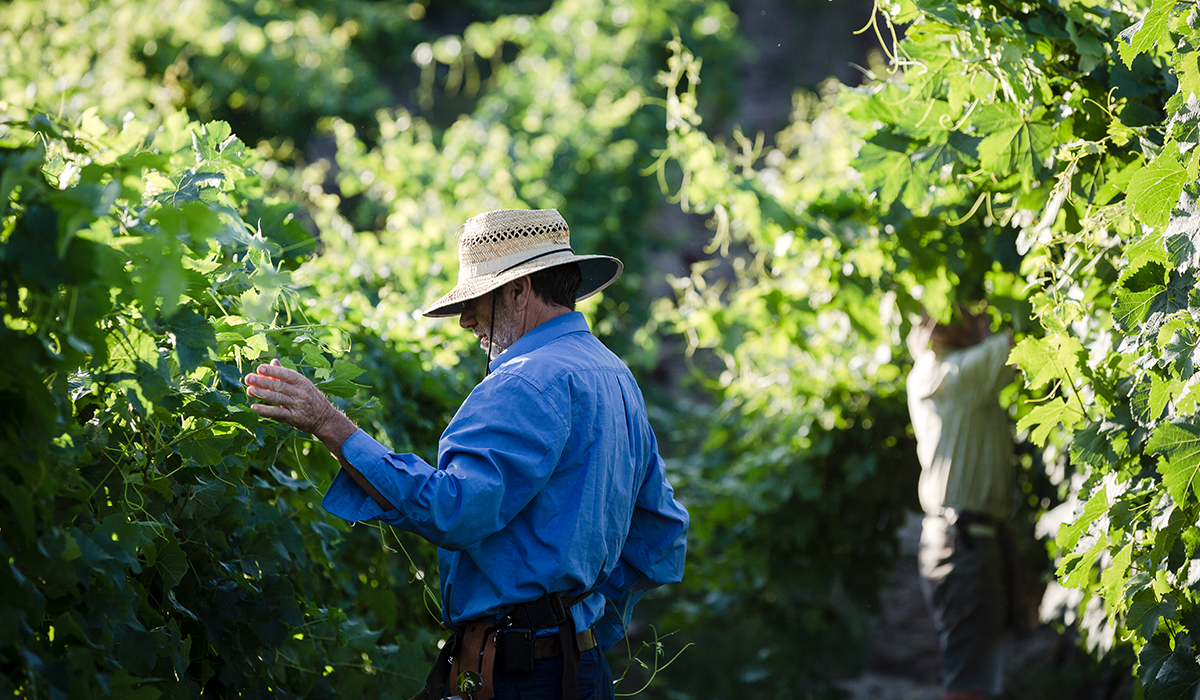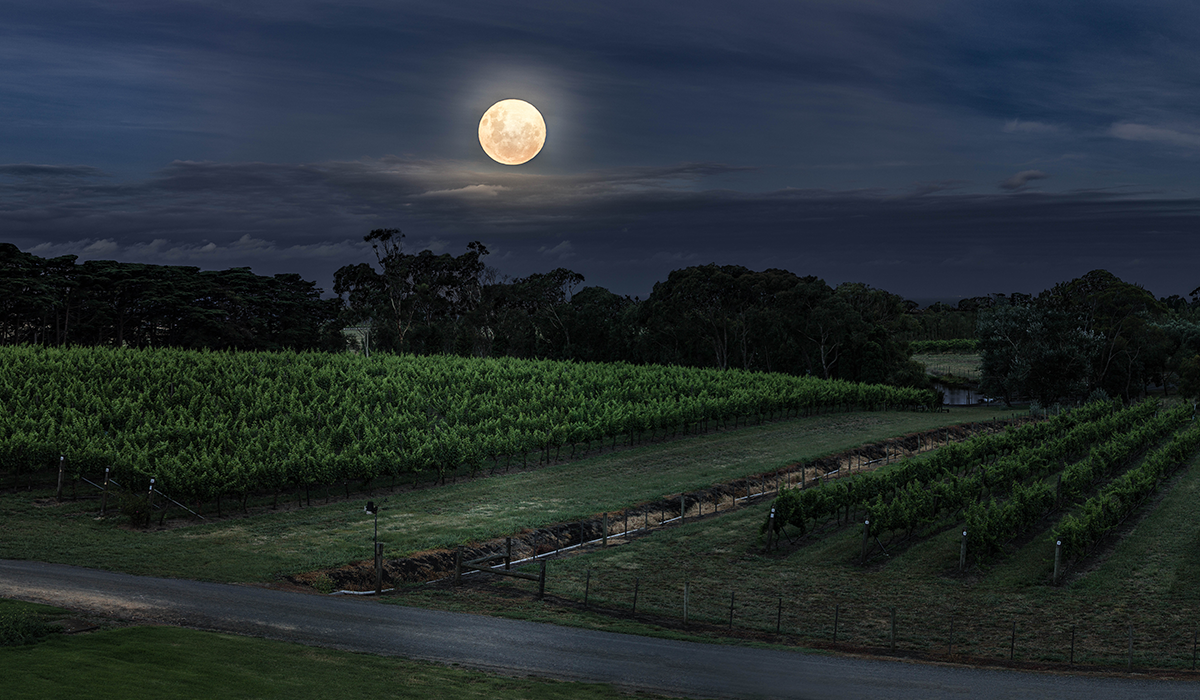The 2024 Victoria vintage
During the 2024 Victorian vintage, the Yarra Valley experienced three times its average rainfall in January, the King Valley had a warm winter and an early budburst. In Beechworth chardonnay, pinot noir, shiraz, sangiovese and nebbiolo shine, while in Geelong chardonnay, pinot noir and shiraz continue to be the regional heroes.
The Yarra Valley had a relatively dry winter and early spring but then had some intense rain events in early summer: January had three times its average rainfall. February and March were then dry and mild with only a couple of heat spikes. Again, this was an early and compressed vintage, though with some late season downy mildew devastating yields in some vineyards.
Chardonnay and later ripening reds look very promising,
pinot noir still under a slight cloud of uncertainty.
The switch from La Niña to El Niño brought wet and windy conditions to the Mornington Peninsula through spring and into early summer, with humid and stormy conditions well into December bringing with it disease pressure, and some outbreaks of powdery and downy mildew. An early and compressed vintage commenced mid-February with low to moderate yields of high-quality fruit, chardonnay and pinot noir the region’s stalwart champions.
Gippsland had a cold and wet winter, then a humid and wet spring, which saw the harvest start in mid-February. The humidity also meant mildew concerns, but this was mostly controlled, and the yields were high in spite of it. Cooler weather in early March slowed the ripening of the reds, which was welcomed by some, though 2024 firmly made its mark as an ‘up and down season’.
 Yarra Yering in the Yarra Valley.
Yarra Yering in the Yarra Valley.
The Alpine Valleys experienced a wet winter followed by warmth in early spring, which led to early budburst. However, a couple of frost events in late spring saw some growers have losses up to 75 per cent (others unaffected). Warm January weather led to rapid ripening and an early start to a very compressed vintage, with low yields of very high-quality fruit, chardonnay,
shiraz and
cabernet excelling.
After a warm winter, the King Valley had an early budburst which followed through to an early season overall. After a rainfall spike in late December, the conditions remained dry and relatively warm, leading to ideal ripening and a vintage where the winemakers had full control over harvest conditions and timing. In general, the yields were low to moderate, with very high-quality chardonnay,
pinot gris,
pinot noir and
prosecco.
Beechworth had very good winter/spring rainfall culminating in full dams and soil moisture early on. Cool weather up to harvest for the early varieties, then very warm and dry, but without heatwaves. Moderate yields, with some bunch-thinning required, the overall quality very high. Chardonnay, pinot noir, shiraz,
sangiovese and nebbiolo are showing the most promise.
 Sorrenberg in Beechworth.
Sorrenberg in Beechworth.
Upper Goulburn had a relatively wet growing season, cool in spring, but perfect warm and dry ripening weather at the end of summer and early autumn. High yields of very good quality across all varieties, the standouts being gewürztraminer and shiraz,
riesling a dark horse.
Like many regions, Geelong had a wet and humid spring and early summer. Uniform fruitset and little disease pressure ensured good yields and excellent quality; chardonnay, pinot noir and shiraz look to be the stars.
Although Henty experienced a dry spring, the beginning of summer was wet due to some heavy rainfall events. The remainder of summer and into autumn was very dry, resulting in moderate yields of high-quality fruit, especially riesling, chardonnay and sparkling base wine.
Despite a wet June, the Macedon Ranges had below average rainfall for winter and spring, and a moderately cool growing season. Early summer brought higher than average rainfall (and wind), affecting the flowering in December, resulting in only low to moderate yields. A warm and dry February and March brought harvest slightly earlier, with high-quality pinot noir and chardonnay, as always, leading the campaign for the region.
 Scotchman's Hill in Geelong.
Scotchman's Hill in Geelong.
Although Bendigo incurred higher than average winter and spring rainfall, it had settled conditions for flowering and fruitset, and a dry, warm-to-hot lead up to harvest. Moderate to high yields of very good to excellent quality, the leaders of the pack are chardonnay, viognier and shiraz.
Heathcote had a wet winter, replenishing water supplies and setting up a great start to a season that needed little irrigation. Mild conditions with cool nights led into a mid-February start to harvest with generous yields, shiraz the variety to stand tall.
Winter/spring rainfall was above average in the Grampians, and well above average up until Christmas. January was dry, but cooler than expected, February with above average temperatures and rolling heat spikes, and then March with perfect ripening weather, resulting in high yields. Some growers are claiming very good to excellent fruit – riesling and shiraz taking the varietal picks – others electing not to pick the majority of fruit due to smoke taint from February bushfires.
After a winter with below average rainfall in Nagambie Lakes, October brought heavy rainfall, damaging winds and severe thunderstorms, with many Victorian weather stations recording their highest daily rainfalls on record. The rain continued through to January, and the flooding of the Goulburn River also brought disease pressure to the vines, meaning spray programs were imperative. February was dry (and the warmest since 2015) prompting an early harvest start and – like many other regions – a compressed vintage; the completion before the end of March was one of the earliest finishes recorded since 1931.
 Mount Langi Ghiran in the Grampians.
Mount Langi Ghiran in the Grampians.
Above average rainfall in the Strathbogie Ranges gave way in early January to warm, dry days and cool nights. Yields of 6–8t/ha are right on average, and have produced excellent fruit across the board from what one excited winemaker claims ‘will be one of the best vintages in the history of the Strathbogies’.
A dry, cool spring in the Pyrenees resulted in later than average flowering and fruitset. A warm summer with late heat spikes in mid-March led to average to above average yields of good quality across all varieties.
Glenrowan enjoyed ideal growing conditions, with regular rainfall until February, allowing for a dry finish without any heatwaves. With an earlier than average vintage and moderate yields, the quality is high, especially for shiraz, durif,
muscat and topaque.
Rutherglen had good winter rainfall after harvest, but then became unpredictable, with both clear skies and storms within a few kilometres of each other. After a 68mm rainfall event on Christmas Day, the new year ushered in a more ‘normal’ regional vintage, with warm, clear days and a mostly dry, disease-free harvest of moderate yields. So far the picks are riesling, marsanne, shiraz,
grenache and muscat, Jen Pfeiffer particularly excited about their upcoming fortifieds.
Murray Darling
The Murray Darling had better than average winter/spring rainfall and a dry harvest with only one rain event in March. Yields were a bit below average, but of very good overall quality; chardonnay and shiraz were the standouts, but the Italian varieties did well, too, vermentino and
nero d’Avola in particular.
Join Halliday Wine Club to drink the very best of Australian wine
Are you an explorer, enthusiast or collector? No matter the Halliday Wine Club plan you choose, each month we'll deliver two bottles of 95+ point wines direct to your door. From $89 per month. You can skip, pause or cancel anytime. Join now.
The 2025 Halliday Wine Companion is available now. Secure your copy of Australia's most comprehensive wine guide at all good bookstores.
This is an edited extract from the 2025 Halliday Wine Companion, with reviews by James Halliday, Campbell Mattinson, Dave Brookes, Jane Faulkner, Jeni Port, Marcus Ellis, Mike Bennie, Philip Rich, Shanteh Wale and Toni Paterson MW. Cover art by Vera Babida.
Top image credit: Bindi Wines.